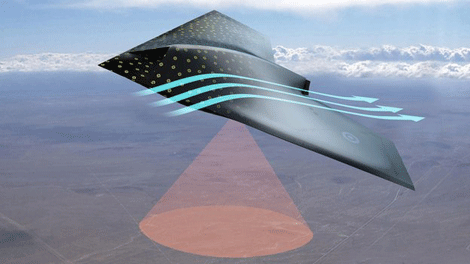
A skin of sensor nodes could report back on speed, temperature or even damage
Engineers at BAE Systems are working on enabling the detection of injury or damage to the outer surfaces of aircraft, through ‘smart skin’, which could eventually pass down to domestic vehicles and appliances.
Its Advanced Technology Centre is investigating the concept; tens of thousands of micro-sensors embedded into the surface, enabling it to sense wind speed, temperature, physical strain and movement, far more accurately than current sensor technology allows.
By continually monitoring their health, reporting back on potential problems before they become significant planes would require fewer regular check-ups on the ground and parts could be replaced in a timely manner, increasing the efficiency of aircraft maintenance, the availability of the plane and improving safety.
The tiny sensors or ‘motes’ can be as small as grains of rice and even as small as dust particles at less than 1mm squared, but potentially so small that they could be retrofitted to existing aircraft possibly by spraying them on like paint.
Collectively, the sensors would have their own power source and when paired with the appropriate software, be able to communicate in much the same way that human skin sends signals to the brain.
Leading the research and development is senior research scientist Lydia Hyde whose ‘eureka’ moment came when she was doing her washing and observed that her tumble dryer uses a sensor to prevent it from overheating.
“Observing how a simple sensor can be used to stop a domestic appliance overheating, got me thinking about how this could be applied to my work and how we could replace bulky, expensive sensors with cheap, miniature, multi-functional ones,” said Lydia.
“This in turn led to the idea that aircraft, or indeed cars and ships, could be covered by thousands of these motes creating a ‘smart skin’ that can sense the world around them and monitor their condition by detecting stress, heat or damage. The idea is to make platforms ‘feel’ using a skin of sensors in the same way humans or animals do.
“By combining the outputs of thousands of sensors with big data analysis, the technology has the potential to be a game-changer for the UK industry. In the future we could see more robust defence platforms that are capable of more complex missions whilst reducing the need for routine maintenance checks. There are also wider civilian applications for the concept which we are exploring.”
//www.youtube.com/embed/B_1P67YZWt0?rel=0






